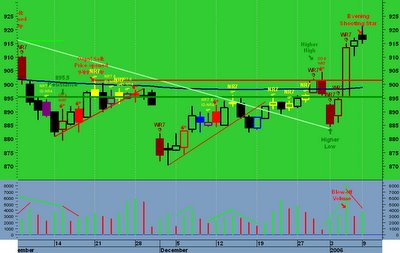Weekly Motivation
Trader's Belief and Actions
Winning traders and losing traders experience the trading environment differently. It makes them feel different and as a result their actions consistently vary. In psychological terms, they interpret the market differently because they have a separate belief system in the way that they see themselves relative to the stock market.
Belief statements that different traders can make:
- The markets exist to give me profits
- If I get stopped out then I have to reevaluate the trade
- If the market doesn't do what I expect then I must reconsider
- I'll take one trade at a time.
- I don't have to be perfect; I just have to do my best.
- Money is not that important
- Losing is part of the process of making money
- Trading is a game, I know I can win
- Every setback provides me with new market information
- I can wait for an opportunity to come
- I must be in the market now
- If I lose on this trade I am a loser
- If I wait for my trading rules I'll miss out
- If I get stopped out I have bad luck
- I can't lose money
- The market makers got me again
- I'm an idiot, how could I lose money
- What will they think when I tell them I lost money on this one?
- The stock market is rigged
- It's impossible to get a good fill
- I cannot take a loss
- If I take my profit then I am right
These different beliefs create different characteristics of winning and losing traders:
- Get pleasure from trading the market as an end in itself
- Not motivated primarily by money
- Confident that they can make money in the market
- Not afraid to take a loss
- Patient
- waits for opportunities
- Uses a highly planned strategy
- Is well prepared, done his homework
- Measures the risk/reward ratio of every trade
**Losing Traders**
- Never define a loss
- Locked into a narrow belief system
- Hesitate to make a trade
- Do not stick to a system
- Trade by whim
- Trade by emotion
- Have no consistent strategy
- Do not practice risk management
- More interested in proving themselves right then being a success









